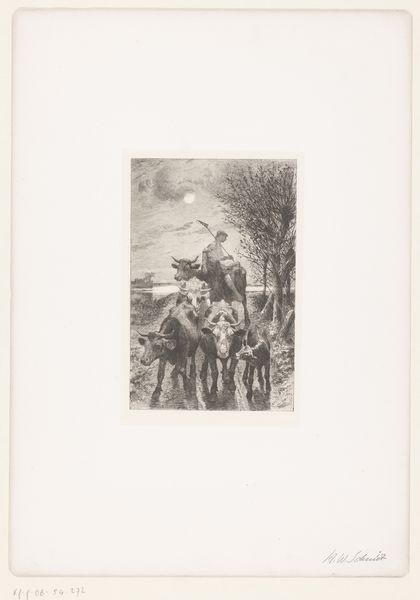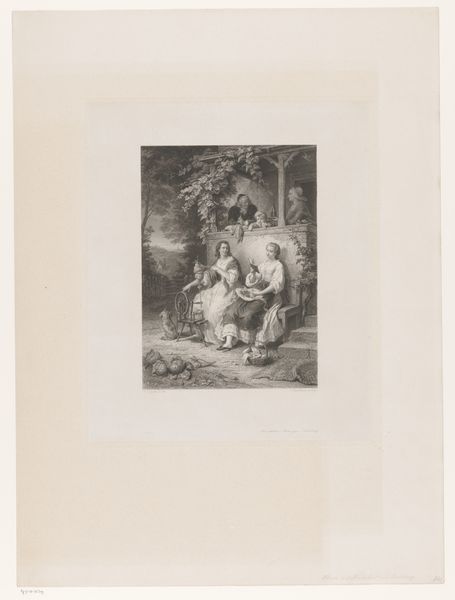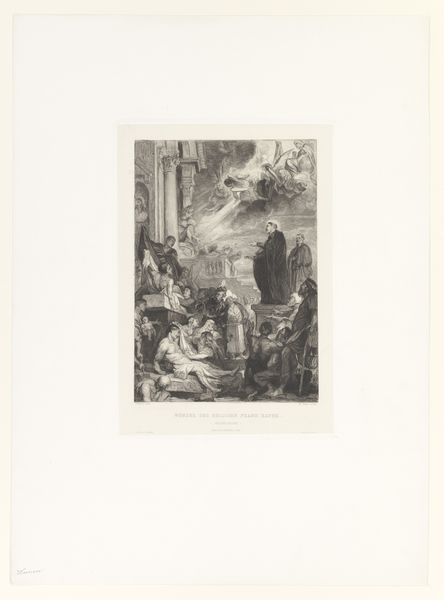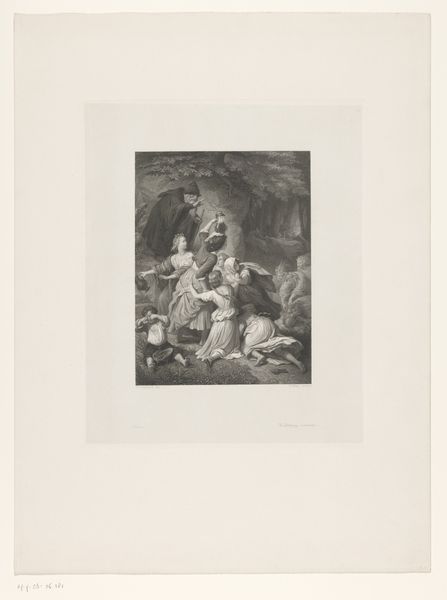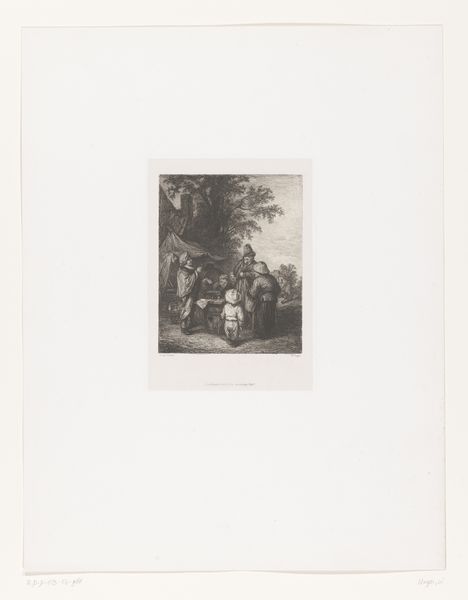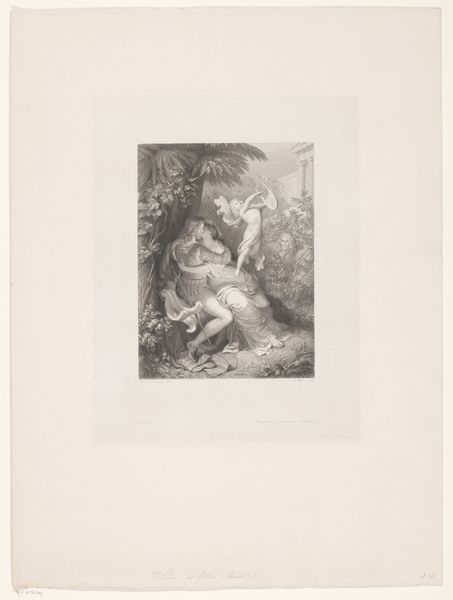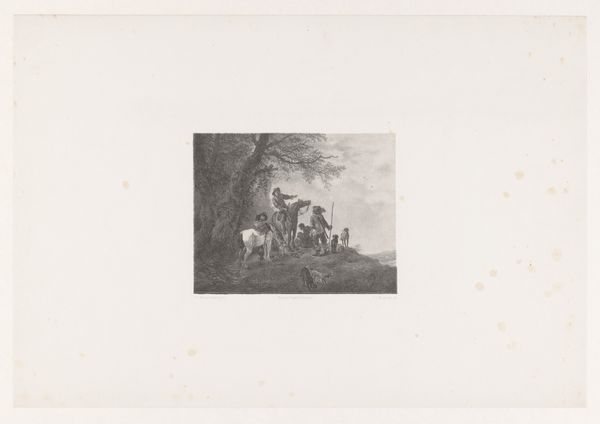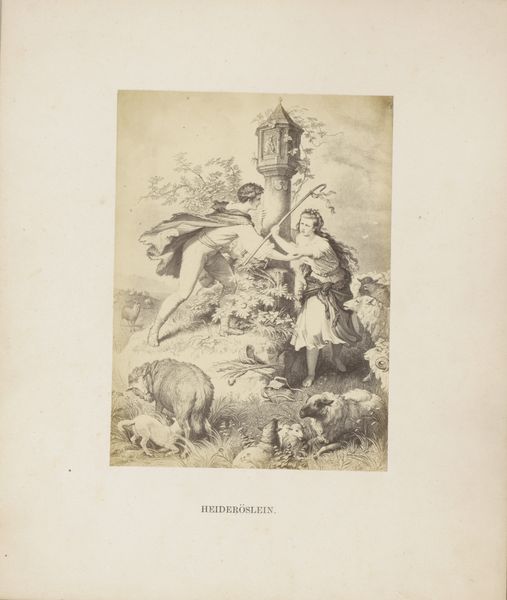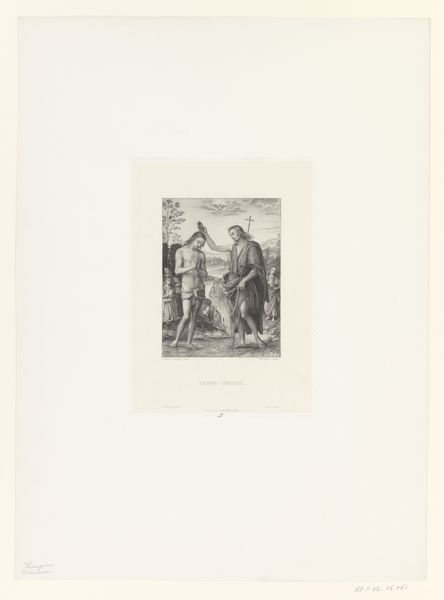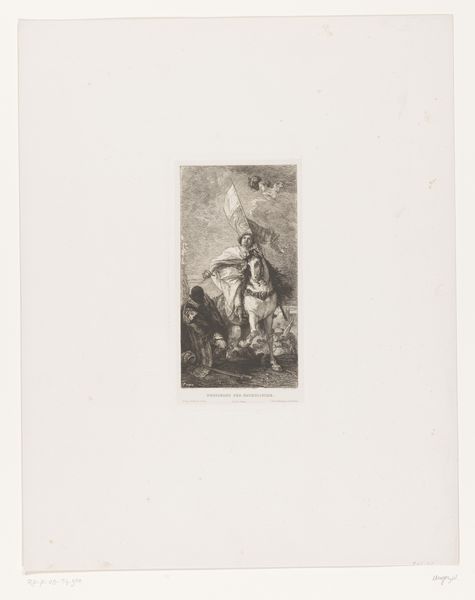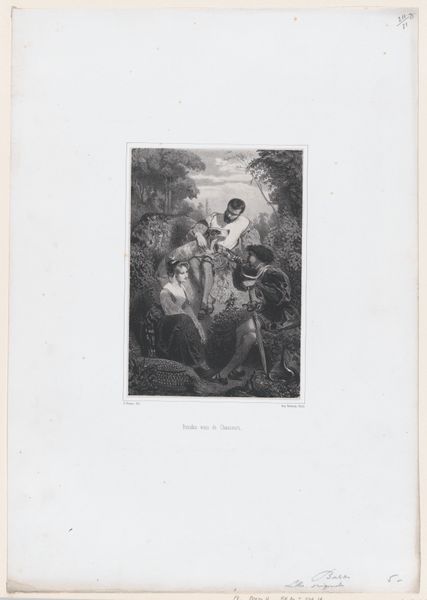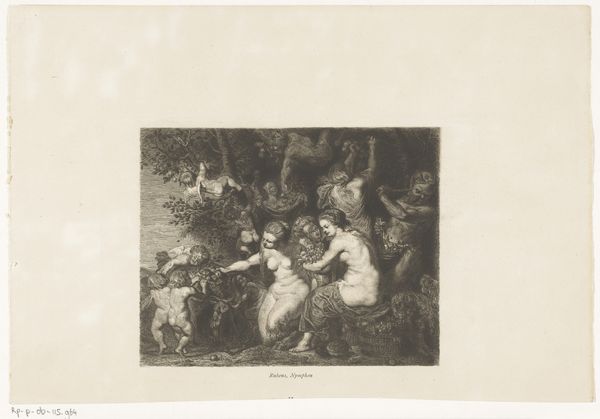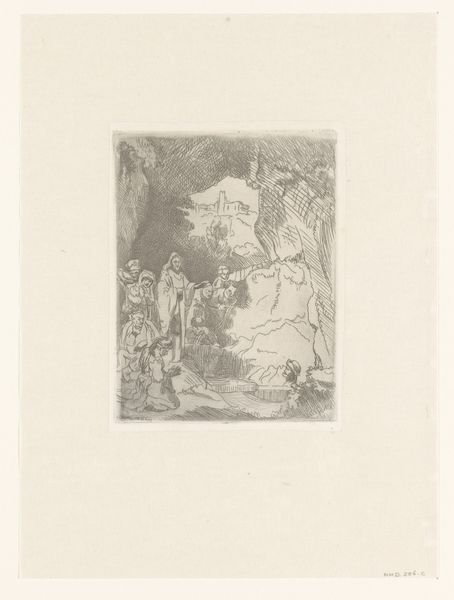
Dimensions: height 432 mm, width 355 mm
Copyright: Rijks Museum: Open Domain
Editor: This is "Heidenröslein achterna gezeten door een herdersjongen" by Heinrich Sachs, likely made between 1841 and 1901, and it's an engraving. There's a definite romantic quality, with a shepherd boy seemingly chasing after a girl, and some sheep, all under what looks like a shrine or monument. What are your thoughts when you look at this piece? Curator: As a materialist, I’m drawn to the engraving process itself. Consider the labor involved: the artist meticulously carving lines into a metal plate, the precise control required to render such detail, the physical exertion. What does this laborious production tell us about the value placed on this image and its dissemination? Editor: I hadn’t really considered the physicality of the process. Is the act of creating the print important to its interpretation, even if that labor isn't immediately apparent to the viewer? Curator: Absolutely! The print wasn't a unique artwork accessible to an elite, but instead became reproducible. We need to consider its social circulation, it would be relatively inexpensive and available to a growing middle class keen on acquiring art. What kind of aspirations or beliefs might an image like this reinforce or challenge within that audience? Editor: It's interesting to think about how the Romantic style, with its focus on emotion and nature, might have been made more accessible through this type of printmaking. It’s not just about the idealized scene, but also about who could own it, thanks to the material process. Curator: Exactly! It moves us beyond the sentimental narrative of boy chases girl to thinking about art's role in shaping class identity and social values. What stories did ownership of art give its holder power to convey? Editor: So, understanding the materiality – the 'how' of its creation – helps reveal the 'why' it was made and its societal impact? I'll definitely keep that in mind moving forward.
Comments
No comments
Be the first to comment and join the conversation on the ultimate creative platform.
